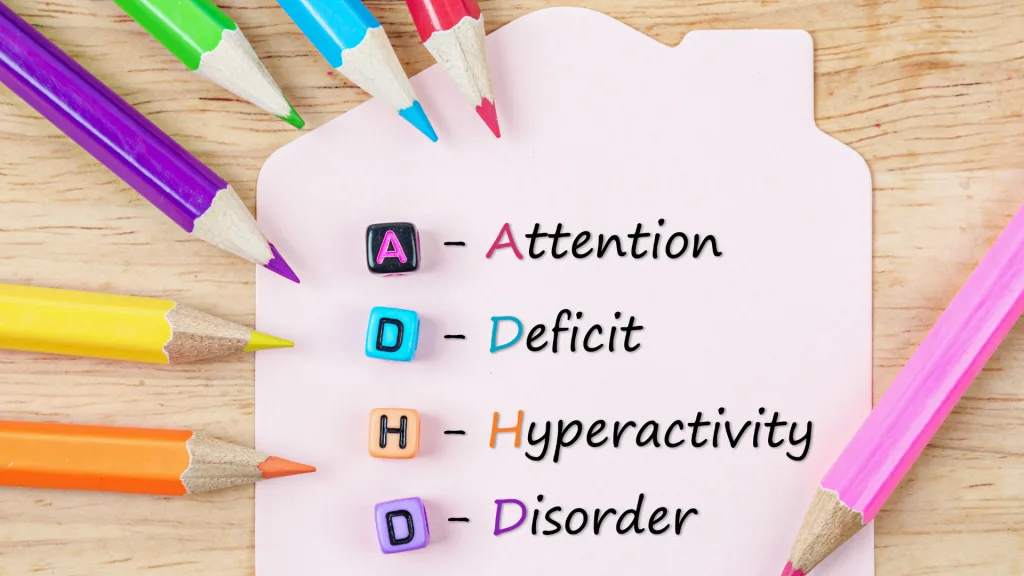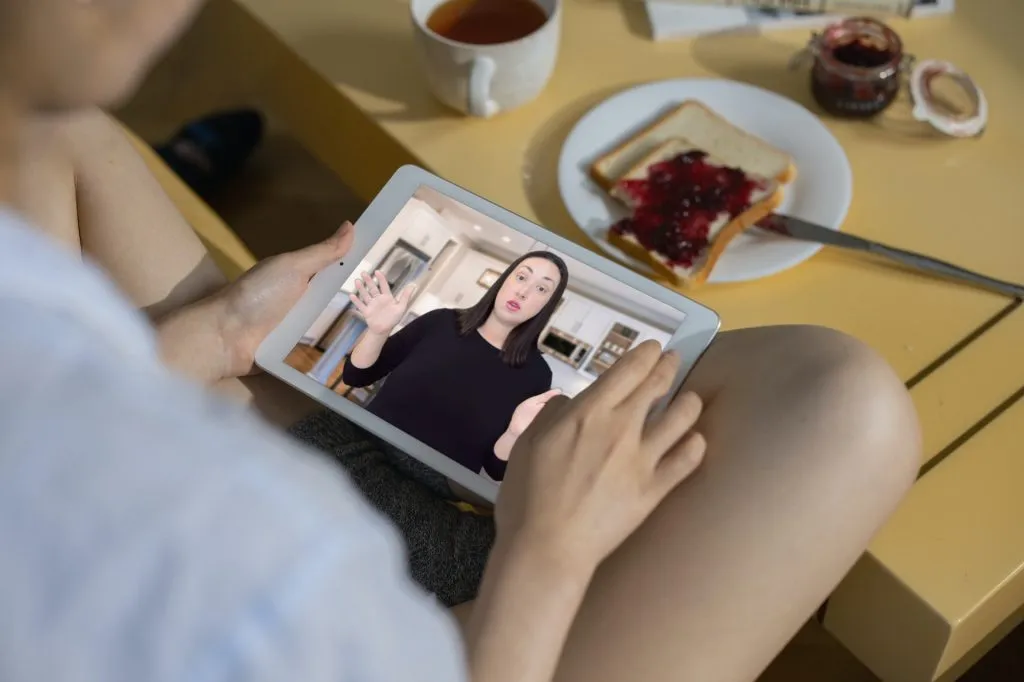Becoming a Minimalist with ADHD
Understanding ADHD Symptoms
In order to become a minimalist with ADHD you will need to understand ADHD symptoms and challenges. Minimalism can be an effective tool for how to deal with overstimulation ADHD.
Attention Deficit Hyperactivity Disorder (ADHD) is a common neurodevelopmental condition characterized by symptoms such as inattention, impulsivity, overstimulation, and hyperactivity.
It’s essential to recognize the differences between an “ADHD brain vs. a normal brain” to understand the unique challenges faced by individuals with ADHD. These challenges can make everyday tasks and decision-making difficult.

Impact of Minimalism on ADHD
One question that often arises is, “Is minimalism good for ADHD?” The minimalist lifestyle, which emphasizes simplicity and intentional living, can have a significant positive impact on mental health. It’s especially beneficial for individuals with ADHD, as it helps reduce distractions, improve focus, and promote a sense of control over one’s life.
Stuff doesn’t just take up physical space, it also takes up mental space. If you are a person with an average amount of stuff, that would mean 300,000 possessions requiring brain power. ADHD can get worse when there is overstimulation occurring from objects.
A Solution for ADHD Challenges
If you’re wondering how to overcome ADHD without medication, becoming a minimalist might be the answer you’re looking for. Be sure to consult your doctor before making any changes to your medical treatment plan. Many people may be looking for natural remedies for ADHD, but these ideas may need to be used in conjunction with medical intervention.
In this blog post, we’ll discuss the benefits of minimalism for individuals with ADHD, explore the connection between ADHD and minimalism, and provide practical tips for implementing a minimalist lifestyle.
We’ll also share success stories from real-life minimalists with ADHD, shedding light on how to deal with overstimulation ADHD and other unique challenges. So, let’s dive in and discover the transformative power of minimalism for those living with ADHD.

Messy to Minimalist E-Course
From my neuro-spicy family to yours, minimalism changed the course of our lives. An invisible weight of stress would keep us constantly stressed out. Now our life is filled with travel and memories.
Messy to Minimalist E-Course
This comprehensive course teaches practical strategies for adopting a minimalist lifestyle, specifically tailored to the needs of individuals with ADHD. Through the course, you’ll learn adult ADHD tips and techniques for managing your environment and simplifying your life, ultimately leading to better mental health and well-being.
All the years you’ve spent trying to buy your way to happiness have been orchestrated by corporations. From infancy we are conditioned to believe stuff will make us happy. Turns out, stuff can be a huge burden mentally, financially, and logistically. Tap into Messy to Minimalist to shift course and create a new path for your life.
Benefits of Minimalism for Individuals with ADHD
Reducing Distractions and Improving Focus
One of the main reasons minimalism is good for mental health, particularly for those with ADHD, is that it helps reduce distractions in your environment. By decluttering your space and keeping only the essentials, you minimize external stimuli that can make it difficult for individuals with ADHD to concentrate.
Implementing ADHD focusing strategies, such as creating designated areas for work and relaxation, can further enhance focus and productivity. One of the biggest lessons you will learn on your minimalist journey is that space does not have to equal stuff. You can have drawers, shelves, and counters that ate completely empty.
When you approach your kitchen to make a meal there is much less chance for you to shut down and give up if you begin with a clear work space. Previously, you would walk into your kitchen and be met with cluttered counter space, inefficiently organized cabinets, and some expired ingredients. A person with ADHD would experience overwhelm and decide to order UberEats, avoiding the problem.
Simplifying Decision-Making
Is minimalism a philosophy? At its core, minimalism is a way of life that promotes simplicity, intentionality, and mindfulness.
For individuals with ADHD, minimalism can be particularly beneficial in simplifying decision-making processes. By reducing the number of choices and prioritizing what truly matters, you can decrease decision fatigue and the stress associated with it.
As a result, you’ll find that everyday tasks become more manageable and less overwhelming.
Self-Esteem and Sense of Control
Understanding how a person with ADHD thinks is crucial for finding effective solutions to manage ADHD symptoms.
A minimalist lifestyle can increase self-esteem and foster a greater sense of control over one’s life. By decluttering your space and adopting ADHD tips for adults, you’ll develop a more organized environment, leading to increased confidence in your ability to manage tasks and responsibilities.
Before minimalism a person with ADHD might feel controlled by objects. Instead of dealing with the overwhelm they would likely shut down and put up a wall of refusal to deal with that stress. If that person instead embraced minimalism they wouldn’t have to put energy into maintaining a wall.
Reducing Stress and Anxiety
ADHD coping skills are essential for maintaining mental well-being, and minimalism can play a significant role in reducing stress and anxiety.
By adopting a clutter-free lifestyle and addressing ADHD things no one talks about, you can create a calm and peaceful environment that supports relaxation and mental clarity. This reduction in stress and anxiety can have a profound impact on your overall mental health, making it easier to manage ADHD symptoms and navigate daily life.
Stress takes time. And wasted time causes more stress. The vicious cycle of anxiety that our possessions can create cannot be overstated. You will gain time back when you don’t have to look for things. Every single task will not lead to procrastination and self loathing for not being more motivated.
Life feels easier when your stuff doesn’t hinder your daily actions.

Understanding ADHD and Minimalism
Challenges of Adopting Minimalism for People with ADHD
While minimalism can provide numerous benefits for individuals with ADHD, it’s important to acknowledge the unique challenges they may face when adopting this lifestyle. For example, ADHD can make it difficult to maintain motivation and focus during the decluttering process, and impulsivity might lead to discarding items that are actually needed.
However, by understanding these challenges and creating tailored strategies, people with ADHD can successfully embrace minimalism. Making no change to your current situation is often thought of as easier than going out on a limb and making a change.
When it comes to minimalism however, the opposite is true. It will be difficult to get to the minimalist finish line so to speak, but it is still easier than living with the chaos for the rest of your life.
How Minimalism Can Help Address ADHD Symptoms
Minimalism is an effective way to manage ADHD symptoms and improve mental health. By reducing clutter and distractions in your environment, you can create a space that encourages focus and calmness. This is particularly important for individuals who struggle with overstimulation ADHD, as it helps minimize sensory input that may exacerbate ADHD symptoms.
Furthermore, by simplifying your life and adopting a minimalist mindset, you can develop healthier habits and routines that contribute to better time management and organization. This is especially helpful for those looking for ways to deal with ADHD without medication, as it provides a natural and sustainable approach to symptom manage.
Creating Tailored Strategies for Individuals with ADHD
Since each person with ADHD experiences unique symptoms and challenges, it’s crucial to create personalized strategies for adopting minimalism. For instance, if you find it difficult to declutter due to inattention or impulsivity, you can break the process into smaller, more manageable tasks. Learning how to clean your room with ADHD might involve setting a timer for short decluttering sessions, investing in an e-course to make you financially motivated to used what you paid for, or enlisting the help of a friend or family member for support and accountability.
Additionally, incorporating ADHD-specific organizational systems and tools can make it easier to maintain a minimalist lifestyle. This can include using labels, color-coding, and designated storage spaces to keep items organized and easily accessible. But, remember, organized clutter is still clutter. Sometimes it’s better to just purge instead of creating organization solutions.
By understanding the connection between ADHD and minimalism and creating tailored strategies, individuals with ADHD can successfully adopt a minimalist lifestyle that supports their mental well-being and enhances their ability to manage symptoms.
Key Principles of Minimalism for ADHD
Prioritizing Possessions and Activities
One of the fundamental principles of minimalism is prioritizing what truly matters. For individuals with ADHD, this means determining which possessions and activities add value to your life and contribute to your well-being.
By focusing on what’s essential, you can eliminate unnecessary items and tasks that may create distractions and mental clutter. Implementing adult ADHD tips, such as creating a list of priorities and setting boundaries, can help you stay focused on what’s truly important.
Embracing Routines and Habits
Developing routines and habits is crucial for managing ADHD symptoms effectively. By establishing a consistent daily schedule, you can create a sense of predictability and structure that reduces stress and helps you stay organized.
Minimalism encourages the simplification of routines, allowing you to concentrate on activities that support your goals and well-being. This approach can make it easier to learn how to deal with ADHD in a more efficient and sustainable way.
Mindful Consumption and Decluttering
Minimalism emphasizes mindful consumption and regular decluttering to maintain a clutter-free environment. For individuals with ADHD, this principle can be particularly beneficial, as it encourages conscious decision-making and reduces the likelihood of accumulating unnecessary items.
Learning how to overcome ADHD without medication often involves cultivating mindfulness and self-awareness, which can help you make more intentional choices about the possessions and activities that occupy your time and space.
Utilizing Visual Cues and Reminders
Visual cues and reminders can be valuable tools for individuals with ADHD, helping them stay organized and focused. In the context of minimalism, this might involve using labels, color-coding, or designated storage spaces to keep items easily accessible and visible.
Additionally, creating visual reminders for daily routines and tasks can help reinforce habits and ensure that important activities are not overlooked.

Practical Tips for Becoming a Minimalist with ADHD
Start Small and Set Achievable Goals
When embarking on your minimalist journey, it’s important to start small and set achievable goals, especially if you’re concerned about whether “can ADHD get worse” with significant life changes.
Begin by decluttering one room or area at a time, allowing yourself to gradually build momentum and confidence in your ability to maintain a minimalist lifestyle.
Use Time Management Techniques
Effective time management is crucial for individuals with ADHD, and minimalism can help support this skill by simplifying routines and tasks. Utilize ADHD coping skills, such as using a timer for focused work sessions, prioritizing tasks, and breaking projects into smaller steps.
By developing these strategies, you’ll find it easier to manage your time and stay organized.
Implement Organizational Systems and Strategies
Maintaining a clutter-free environment is key to enjoying the benefits of minimalism for ADHD. Create organizational systems tailored to your needs, such as using labels, color-coding, or designated storage spaces for your belongings.
Additionally, develop routines for regularly decluttering your space, ensuring that your environment remains supportive of your ADHD management goals.
Seek Support from Friends, Family, or Professionals
Living with ADHD can be challenging, and it’s essential to have a support network to help you navigate the process of becoming a minimalist. Share your goals and experiences with friends, family, or even professional organizers who can provide guidance, encouragement, and ADHD tips for adults.
Having support can make the journey towards minimalism more enjoyable and sustainable.

Be Patient and Compassionate with Yourself
Remember that learning how to fix ADHD without medication is a gradual process, and adopting a minimalist lifestyle may not always be easy. It’s crucial to be patient and compassionate with yourself as you work towards your goals. Celebrate your successes, learn from setbacks, and remember that minimalism is a journey, not a destination.
By following these practical tips, you’ll be well on your way to embracing minimalism and experiencing the positive impact it can have on your ADHD management and overall mental well-being.
Success Stories: Real-Life Examples of Minimalists with ADHD
Overcoming Overstimulation and Boosting Productivity
Meet Sarah, a graphic designer who struggled with overstimulation ADHD and found it challenging to focus on her work in her cluttered home office. After discovering the connection between minimalism and ADHD, she decided to declutter her workspace, removing unnecessary items and creating designated areas for different tasks. As a result, Sarah experienced a significant boost in productivity and focus, making it easier to manage her ADHD symptoms and excel in her career.
Transforming Relationships and Gaining a Sense of Control
James, a father of two, often found himself overwhelmed by the chaos of family life and the demands of his job. After learning about how to deal with ADHD without medication through minimalism, he decided to simplify his home environment and daily routines. By doing so, he gained a greater sense of control over his life and improved his relationships with his family, as he was better able to manage his ADHD symptoms and dedicate quality time to his loved ones.
Embracing Mindfulness and Improved Mental Health
Rebecca, a college student with ADHD, was constantly feeling stressed and disorganized. When she stumbled upon the Messy to Minimalist e-course, she decided to give it a try. Through the course, she learned valuable adult ADHD tips and techniques for decluttering her living space and adopting a minimalist mindset. By embracing mindfulness and intentionality, Rebecca was able to reduce her stress levels, improve her mental health, and find greater success in her academic pursuits.
Next Steps to Minimalism Success
Adopting a minimalist lifestyle can be a powerful and effective way to manage ADHD symptoms and improve mental well-being. By simplifying your environment, prioritizing what truly matters, and implementing ADHD-specific strategies, you can create a supportive and organized space that fosters focus, calm, and a sense of control over your life.
As you embark on your journey towards minimalism, consider the following next steps:
- Reflect on your personal goals and motivations for adopting a minimalist lifestyle, and consider how it can specifically benefit your ADHD management.
- Develop a plan for decluttering your space, starting with one area at a time, and create organizational systems tailored to your needs.
- Continuously educate yourself about ADHD and minimalism by reading books, articles, and attending workshops or support groups.
- Consider enrolling in the Messy to Minimalist e-course to learn valuable strategies and techniques for successfully adopting a minimalist lifestyle with ADHD.
By taking these steps and committing to a minimalist lifestyle, you can experience the transformative benefits of minimalism for your ADHD management and overall mental health. Remember to be patient and compassionate with yourself throughout the process, and know that every small step towards minimalism can make a significant impact on your well-being and quality of life.



Leave a comment